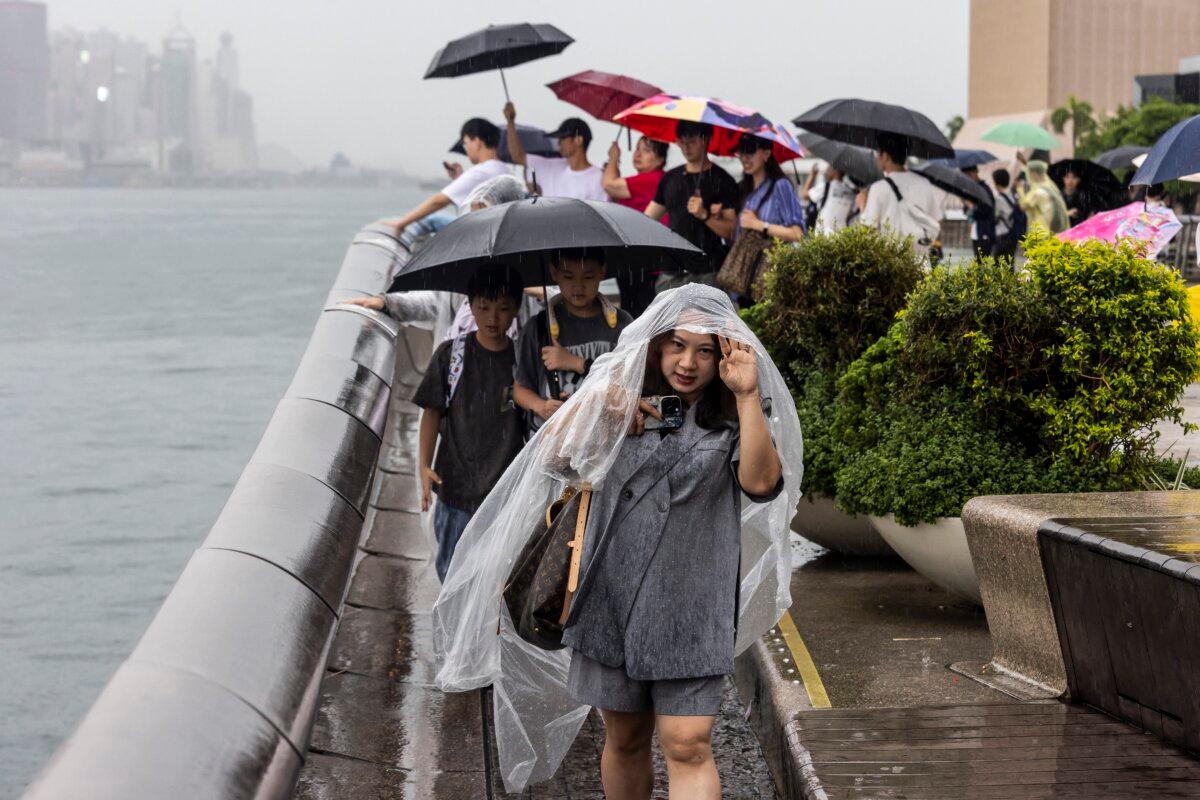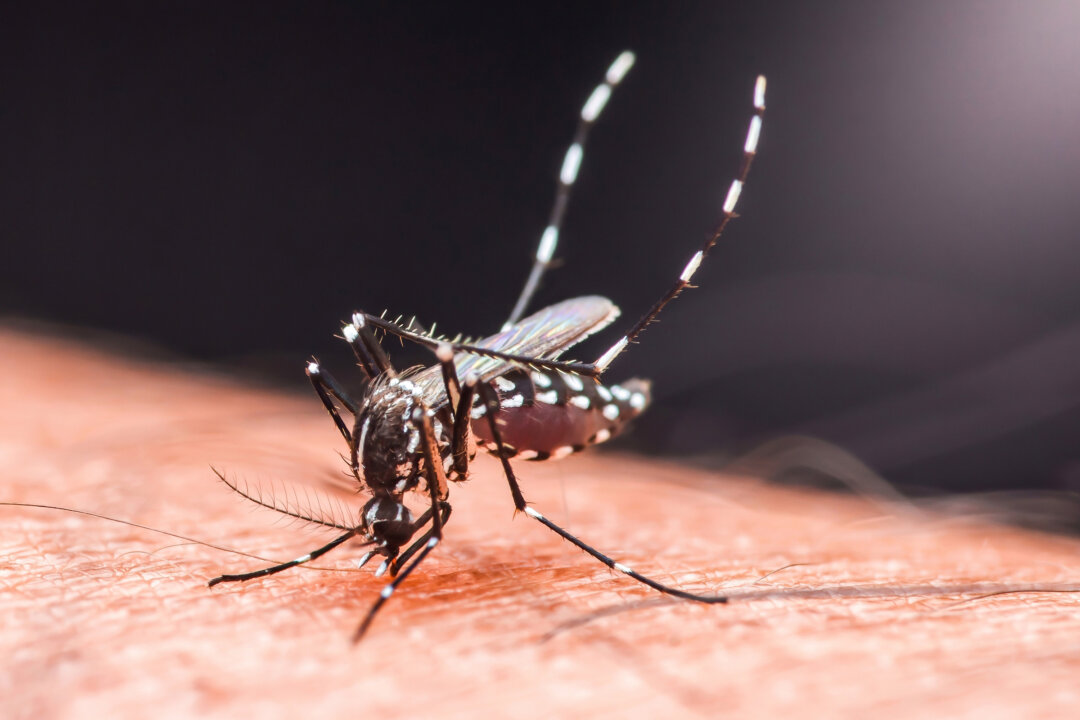The chikungunya outbreak continues to spread in China, leading local authorities to apply strict control measures similar to those used during the COVID-19 pandemic.
On Aug. 12, six provinces and regions—Guangdong, Zhejiang, Fujian, Hainan, Yunnan, and Guangxi—were designated category I areas by the Chinese Center for Disease Control and Prevention for chikungunya outbreak prevention and control.
More recently, the Guangdong Provincial Center for Disease Control and Prevention posted on its official WeChat account that 830 new local cases of the mosquito-borne virus were reported in the province from Aug. 10 to Aug.16. According to the communist regime’s officially published data, there have been 9,933 cases in Guangdong since the first confirmed case appeared on July 8 in the city of Foshan, which has been hardest hit.
Confirmed cases have been detected in more than 10 cities in Guangdong Province, according to the center.
The virus has also spread to other regions such as Macau and Hong Kong, with cases also being reported in Beijing in July.
With the Chinese regime’s record of censoring data that it considers politically sensitive—as seen with its cover-up of COVID-19 infections and related deaths in late 2019—the actual number of known chikungunya infections could be higher.
Chikungunya fever is a viral disease mainly transmitted to humans by mosquitoes. Its symptoms are similar to those of dengue fever. Patients usually experience fever, severe joint pain, muscle pain, headache, fatigue, and rashes.
Deaths from the disease are rare but do occur, especially among vulnerable populations such as those with underlying health conditions.
There is no specific antiviral treatment for chikungunya.
The U.S. Centers for Disease Control and Prevention issued a Level 2 travel alert on Aug. 1 for China as the chikungunya virus outbreak spread.
Although Chinese health authorities had not reported any severe cases or deaths, the regime’s local authorities have imposed control measures similar to those imposed during the COVID-19 pandemic, such as mandatory hospital quarantines—which patients must pay for—and PCR testing, provoking public fears of draconian lockdowns.
Authorities have also adopted mandatory blood draws for PCR testing and have released millions of genetically modified lab mosquitoes weekly in an attempt to reduce the mosquito population, raising public concerns.
In recent days, according to Chinese language media reports and social media posts by Chinese citizens, as well as what they have told The Epoch Times, communist authorities have adopted more extreme control measures, seriously disrupting people’s lives.
Destroying Vegetable Plots
In response to the chikungunya outbreak, local authorities in Guangdong Province have implemented an extreme prevention and control measure in which they use machinery to uproot vegetables from villagers’ plots and residents’ gardens and then seal the areas with cement.
Epidemic control staff have also sprayed pesticides throughout villages and cities.
According to Chinese media reports, authorities’ “cleanup efforts” to prevent mosquitoes not only targeted wasteland but also extended to vegetable gardens in residents’ own yards that they had carefully tended for years, without adequate prior notice or compensation.
“I’ve been growing this vegetable plot for five years, and it’s all for our own consumption,” one villager told Tangren Daily. “It’s not only clean but also healthy. Now, it’s all gone overnight. We are willing to cooperate with epidemic prevention measures, but epidemic prevention doesn’t mean destroying our lives.”
Mainland Chinese media outlet Beijing News reported that a resident in Foshan posted a video on social media on Aug. 11 showing some residents’ vegetable plots being destroyed by authorities. A staff member from a community office told the outlet that the reason for the action was that there was a chikungunya outbreak in the area and that the vegetable plots had stagnant water and compost, creating a breeding ground for mosquitoes.
More video posts on social media show that once-healthy vegetable plots had been completely sealed with cement in Foshan to prevent chikungunya. A large number of workers were clearing away greenery in the city in the name of preventing mosquitoes from hiding in it, according to Chinese-language media reports.
Wang, a Foshan resident who gave only his last name because of safety concerns, told The Epoch Times on Aug. 17 that authorities had launched a huge campaign to get rid of mosquitoes, which has seriously disrupted people’s lives.
“The epidemic control staff went to people’s homes, causing widespread public outrage and anxiety. Everything in residents’ homes was ripped out or emptied out, from plants and vegetables to flower pots and even cats’ drinking water,” he said.
Shen, a migrant worker working in Guangdong who didn’t give his full name because of safety concerns, also told The Epoch Times on Aug. 17 that “all the vegetables people planted in their own land were ripped out.”
Large-scale spraying of pesticides and clearing of vegetable plots also occurred in Guigang, Guilin, Nanning, Hezhou, and other places in Guangxi Province, according to local residents.
Mosquito Nets Installed in City Sewers
Typhoon Yangliu, also called Podul, made landfall in Fujian Province on Aug. 14, bringing with it heavy rains that fell in Guangdong, Guangxi, Sichuan, and other regions.
Days before the typhoon hit in Foshan, local residents posted videos of authorities there installing mosquito nets in the manholes of the city’s sewer system as part of chikungunya prevention. Residents complained online that the mosquito nets blocked drainage and caused severe urban flooding.
“They’ve installed screens on all the manholes along the streets, taping them tightly,” Shen said. “And then there were the heavy rains in Foshan these past couple of days. The water couldn’t go down the sewers, and the downpour was so intense that the city was flooded. Isn’t this excessive prevention? It’s absurd.”
Dr. Chian-Feng Huang, an attending psychiatrist and director of Miaoli General Hospital in Taiwan who specializes in preventive medicine, told The Epoch Times that effective chikungunya prevention and control measures include installing screens on windows and doors, installing air conditioning, and wearing light-colored, long-sleeved clothing.
“Community prevention measures include removing sources of contamination, such as containers prone to water accumulation,” Huang said.

He noted that Guangdong appeared to be returning to the extreme lockdown measures of the COVID-19 pandemic.
“Measures like mandatory PCR testing, mandatory self-paid quarantine, and forced blood draws have exceeded the actual epidemic prevention needs,” Huang said.
“This raises the question of whether they are using this as an opportunity to establish a database of citizens’ blood.
“Furthermore, the block of drainage has exacerbated flooding, which is the consequence of the authorities’ misguided and extreme epidemic prevention measures. Yet the public is bearing the brunt of this burden.”
Sean Lin, an assistant professor in the Biomedical Science Department at Fei Tian College and a former U.S. Army microbiologist, also told The Epoch Times that installing mosquito nets over the manholes of the sewer system is “a completely unreasonable approach.”
“Mosquitoes thrive in stagnant water. Sewer water is generally flowing, so it’s not a place where mosquitoes would be attracted. If the sewer has become stagnant, then the goal is to clean it and get the water flowing,“ he said. ”So adding a so-called protective film or screen over the manholes only increases the obstruction to water flow.”
Luo Ya and Xin Ling contributed to this report.

